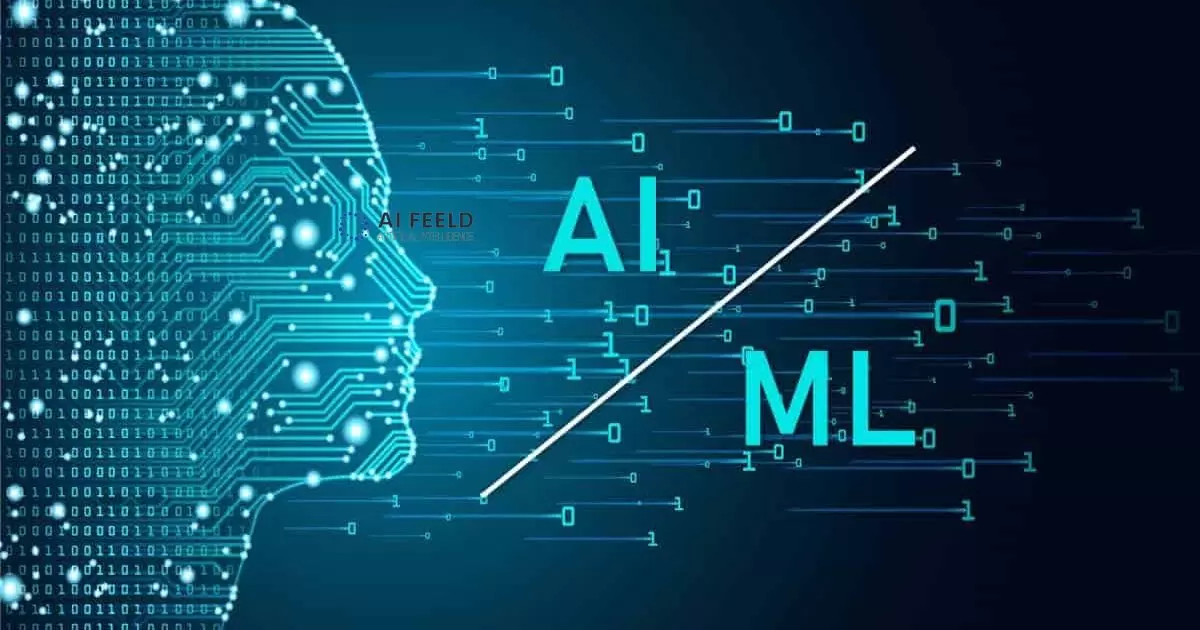AI and ML applications use advanced algorithms to enable machines to learn from data, make decisions, and perform tasks without explicit programming. They power technologies that mimic human intelligence, allowing for automation, prediction, and personalized experiences in various fields like healthcare, finance, and entertainment.
Imagine relying on a navigation app that consistently gives wrong directions or a healthcare application that provides inaccurate diagnostic suggestions. The implications of flawed AI and ML applications are far reaching. Testing these applications becomes paramount to guarantee their effectiveness and reliability.
Testing AI and ML applications involves verifying their accuracy and functionality by assessing how well algorithms interpret data and make decisions. It includes various testing methods like functional testing to ensure proper functionality, performance testing to gauge response under different conditions, and model evaluation to validate accuracy and consistency in results. This process ensures these advanced technologies operate reliably and effectively.
What is AI and ML in Application Testing?
Artificial Intelligence (AI) and Machine Learning (ML) play pivotal roles in the domain of application testing. AI, a technology enabling machines to simulate human intelligence, and ML, a subset of AI focusing on system learning and improvement without explicit programming, offer innovative solutions in testing software applications. In application testing, AI is employed for various purposes.
It enhances test automation by predicting possible defects, reducing the need for manual testing, and improving test coverage. AI algorithms can analyze complex data sets, identifying patterns and anomalies, thereby aiding in the detection of potential errors in the application. ML algorithms adapt to new conditions, refine test scenarios, and identify elusive issues, enhancing the overall testing process.
In essence, AI and ML in application testing provide efficient, accurate, and adaptive methods to ensure software quality, AI trading bot, detecting issues swiftly, and supporting the development of robust applications in an ever evolving technological landscape.
Types of Testing for AI and ML Applications
AI and ML applications demand various testing approaches to cover different aspects of functionality and performance.
Functional Testing
Functional testing involves assessing if the application performs as intended. For AI and ML, it ensures that the algorithms accurately interpret data, make correct decisions, and generate the expected outcomes. This includes testing individual components, APIs, and overall system functionality.
Performance Testing
Performance testing evaluates how the application behaves under various loads, ensuring it functions optimally in real world scenarios. It involves stress testing, load testing, and assessing response times to guarantee smooth performance under different conditions.
Model Evaluation and Validation
This specific testing focuses on validating the accuracy of ML models. It involves methods like cross validation, ensuring the model performs consistently on diverse datasets, preventing overfitting, and maintaining generalizability.
What are the two parts to AI testing
AI testing involves two primary parts:
Training Phase Testing
- Evaluation of the training data quality and quantity.
- Assessing the algorithms’ performance during the learning phase.
- Ensuring the models are learning and improving accurately.
Inference Phase Testing
- Verifying the model’s performance with new, unseen data.
- Testing the AI’s decision making abilities in real world scenarios.
- Ensuring the model’s output aligns with expected results and doesn’t exhibit bias or errors.
How To Use AI/ML In Application Testing?
AI/ML in application testing involves using smart algorithms to improve testing processes. Test automation, one of its key applications, employs machine learning to predict potential issues, enabling faster and more efficient identification of bugs. AI algorithms analyze patterns in software behavior, aiding in the creation of more comprehensive test scenarios, enhancing the quality of applications and reducing manual testing efforts.
Also, AI/ML plays a vital role in test case generation. Through historical data analysis, machine learning algorithms can identify critical areas within an application, automatically creating test cases for these specific sections. This targeted approach helps in thorough testing, ensuring better coverage and more effective identification of defects, ultimately contributing to the overall improvement of software quality.
Benefits Of Using AI/ML in Application Testing
Utilizing AI and machine learning in application testing brings numerous advantages, enhancing the efficiency and effectiveness of the testing process. Some of the key benefits include:
Automation: AI/ML technologies automate repetitive tasks, reducing human intervention and speeding up the testing process.
Enhanced Accuracy: These technologies provide more accurate results by detecting patterns and anomalies that might be missed by manual testing.
Predictive Analysis: AI/ML can predict potential issues and performance bottlenecks, allowing proactive resolution.
Improved Test Coverage: With the ability to test various scenarios simultaneously, the test coverage significantly expands, ensuring more thorough assessments.
Resource Optimization: AI/ML optimizes resource allocation, utilizing testing assets more efficiently.
Quick Feedback Loops: Rapid analysis and feedback allow for swift adjustments and improvements during the development phase.
The incorporation of AI/ML in application testing revolutionizes the traditional methods, offering a more efficient, accurate, and comprehensive approach, ultimately leading to higher quality software products and faster time to market.
Challenges of AI/ML in Application Testing
Testing AI and ML applications poses unique challenges due to their complexity, dynamic nature, and the need for specialized validation processes.
| Challenge | Description |
| Data Quality | Ensuring high quality, diverse, and representative data for training and testing AI models. |
| Model Interpretability | Understanding and explaining how AI/ML models arrive at their decisions or predictions. |
| Scalability | Handling large scale datasets and the ability to scale testing processes efficiently. |
| Ethical Implications | Addressing biases, fairness, and ethical concerns that may arise from AI/ML testing and its implications. |
| Adaptability | Testing AI models’ ability to adapt to new data or scenarios without compromising performance. |
Best Practices When Using AI/ML in Application Testing

When integrating AI/ML in application testing, following best practices is crucial for effective performance. Firstly, it’s essential to establish a comprehensive testing strategy that includes both traditional and AI driven methodologies. This ensures a balanced approach, leveraging the strengths of AI while not neglecting the proven techniques of conventional testing.
Secondly, maintaining high quality, diverse datasets is key. These datasets serve as the foundation for training AI models to recognize patterns and anomalies accurately. Regularly updating and expanding these datasets improves the AI’s ability to adapt to new scenarios, leading to more robust and reliable testing outcomes. Overall, a combination of strategic planning, a balanced approach, and quality data sets the stage for successful AI/ML integration in application testing.
Testing With AI vs Testing For AI Applications
Testing with AI involves utilizing artificial intelligence tools and algorithms to perform various testing processes within AI applications. This method employs AI driven techniques to automate tasks like regression testing, data validation, and performance analysis, enhancing efficiency and accuracy in the testing phase.
By using AI, testers can simulate real world scenarios, identify potential issues, and ensure the application functions optimally under diverse conditions. On the other hand, testing for AI applications refers to the assessment of the AI system’s performance, accuracy, and reliability. Testers evaluate the AI’s capabilities, such as its ability to learn, adapt, and make decisions, ensuring it meets the desired standards.
AI testing includes evaluating data quality, algorithm accuracy, and ethics, ensuring ethical and effective operation in its environment.Both approaches, testing with AI and testing for AI applications, are crucial in ensuring the robustness and success of AI technologies.
Start Using AI/ML in Software Testing With Katalon Platform
Katalon Platform offers a simple way to integrate AI and Machine Learning into application testing. By harnessing this technology, testers can streamline processes, identify patterns, and predict potential issues, enhancing the efficiency and accuracy of testing procedures.
With Katalon’s user friendly interface, incorporating AI/ML in testing becomes accessible to developers at all levels. This platform empowers testers to automate tasks, detect anomalies, and optimize test coverage through intelligent algorithms. By leveraging AI/ML capabilities, Katalon revolutionizes application testing, providing a robust solution that ensures higher quality, faster testing, and improved overall performance.
How to test ai products
Testing AI products is essential to ensure their accuracy and reliability. To begin, developers conduct various tests, including functional and non functional assessments. Functional tests validate if the AI performs its intended tasks correctly, while non functional tests evaluate its performance under different conditions, like varying data sets or computational loads.
Testing involves analyzing the AI’s responses against expected outcomes to identify and rectify any errors. Additionally, developers perform stress tests to assess its limits and security tests to guarantee the AI’s resilience against potential vulnerabilities. These meticulous testing procedures ensure the AI product functions effectively, providing reliable and accurate results in real world scenarios.
FAQs
How do I become an AI or ML tester?
To become an AI or ML tester, gain proficiency in programming languages like Python, learn AI/ML concepts, and acquire skills in testing frameworks and methodologies, while also familiarizing yourself with data handling and analysis.
What is the ML testing strategy?
The ML testing strategy involves verifying model accuracy, evaluating data quality, and assessing the model’s performance in diverse scenarios to ensure its reliability and effectiveness.
What role does human intervention play in testing AI and ML applications?
Human intervention is crucial for validation and interpretation of results. While automation aids in efficiency, human oversight is essential to ensure the ethical, fair, and accurate functioning of AI and ML models.
Conclusion
In testing AI and ML applications, ensuring accuracy and reliability is crucial. By evaluating data quality, algorithm performance, and ethical considerations, we guarantee these technologies operate ethically and effectively. Through diverse testing methods and best practices, we maintain the trustworthiness and proper functioning of these intelligent systems.
The continuous commitment to testing ensures that AI and ML applications evolve responsibly, shaping a future where innovation and technology go hand in hand for the benefit of all. Testing AI and ML applications assures their ethical and effective operation in various environments, fostering a trustworthy technological landscape.











